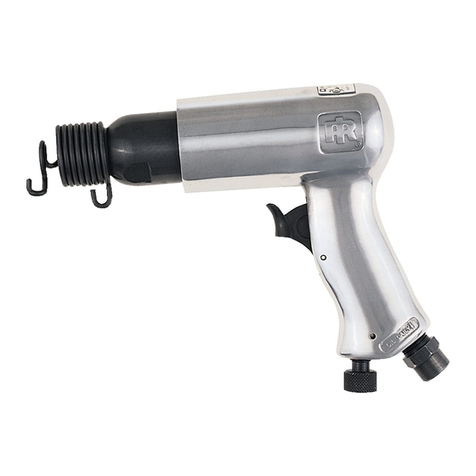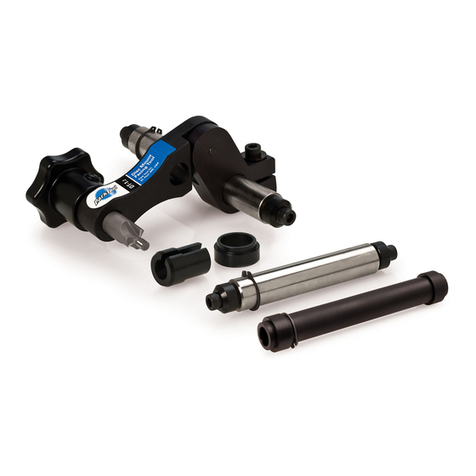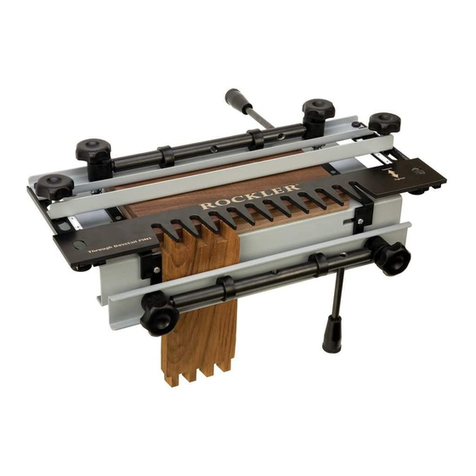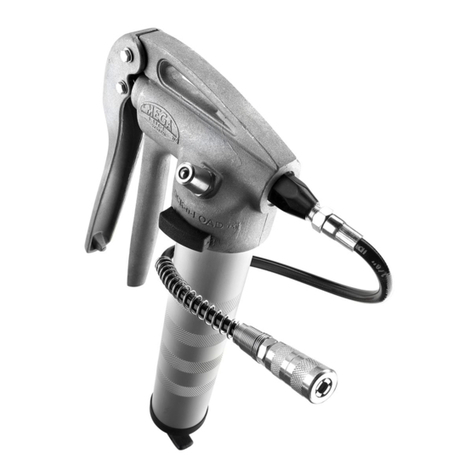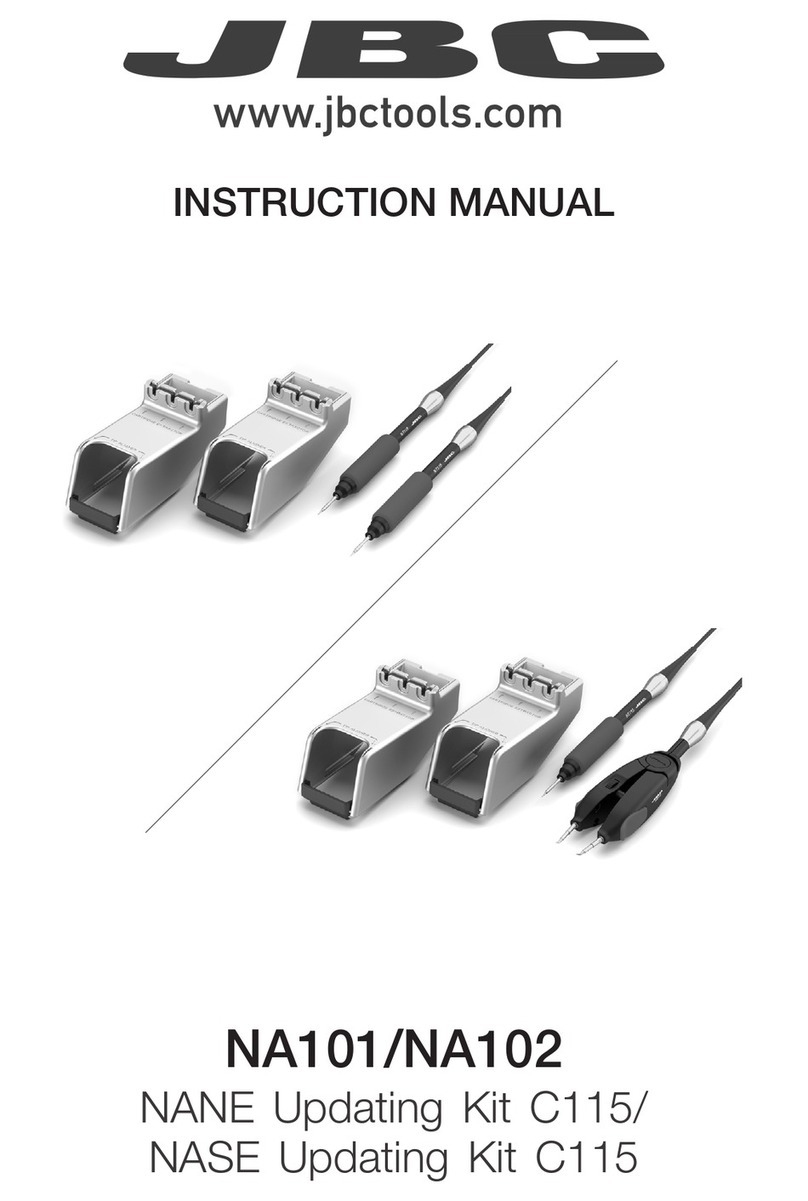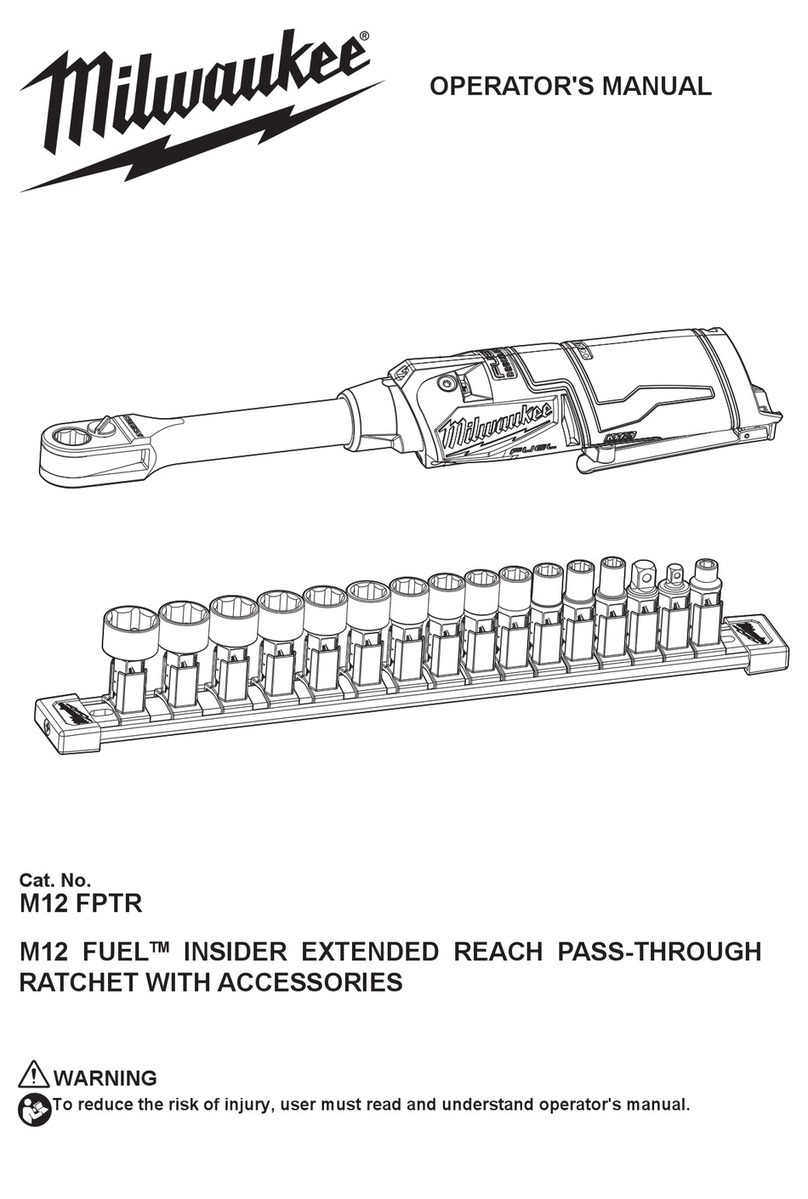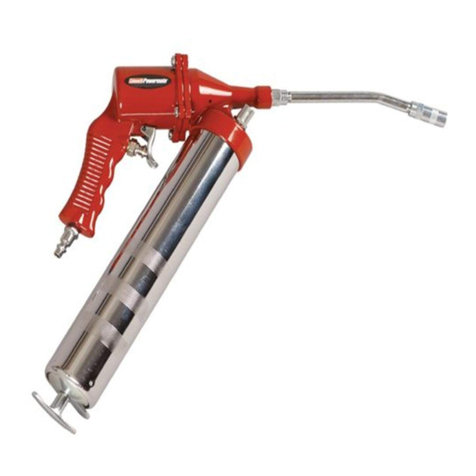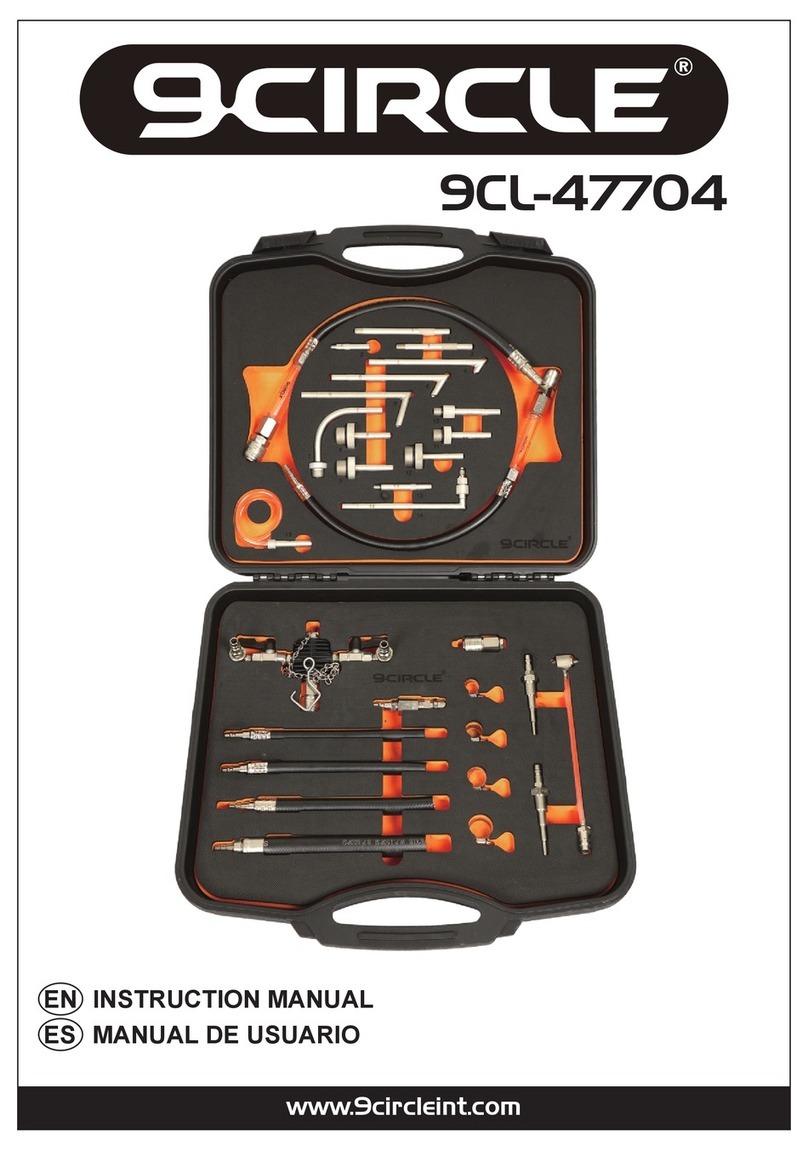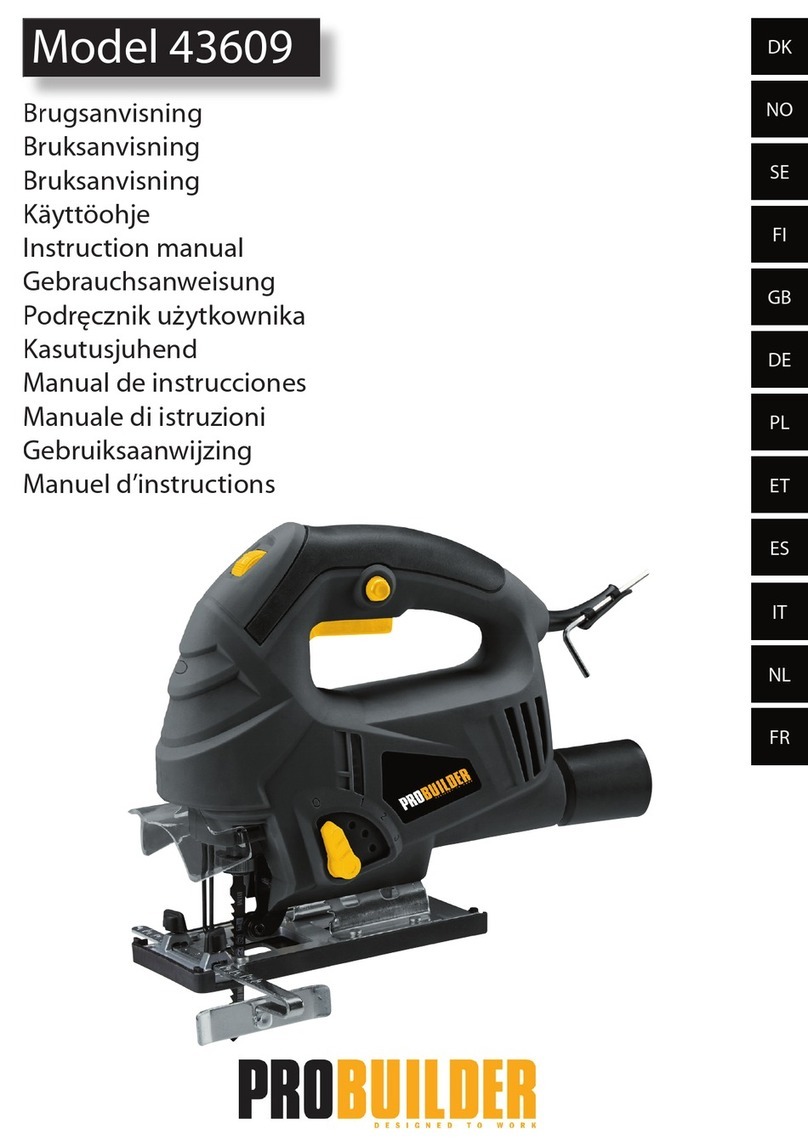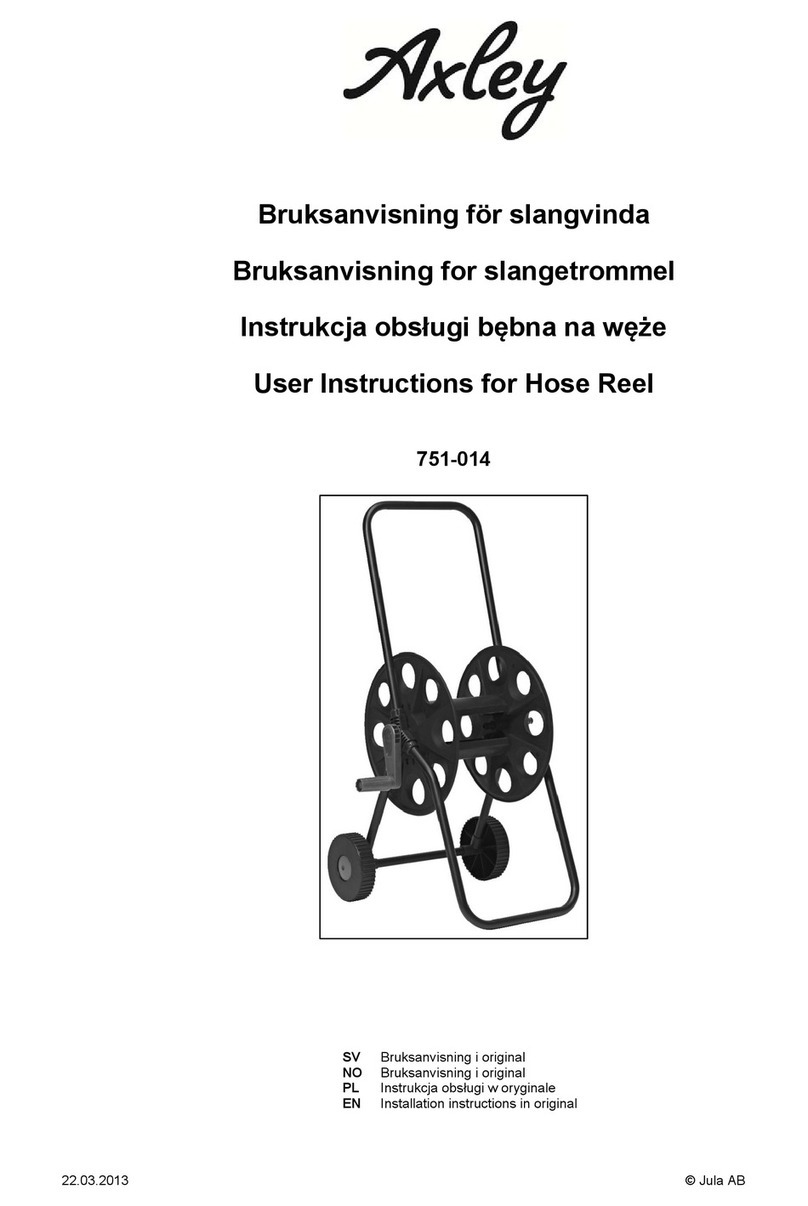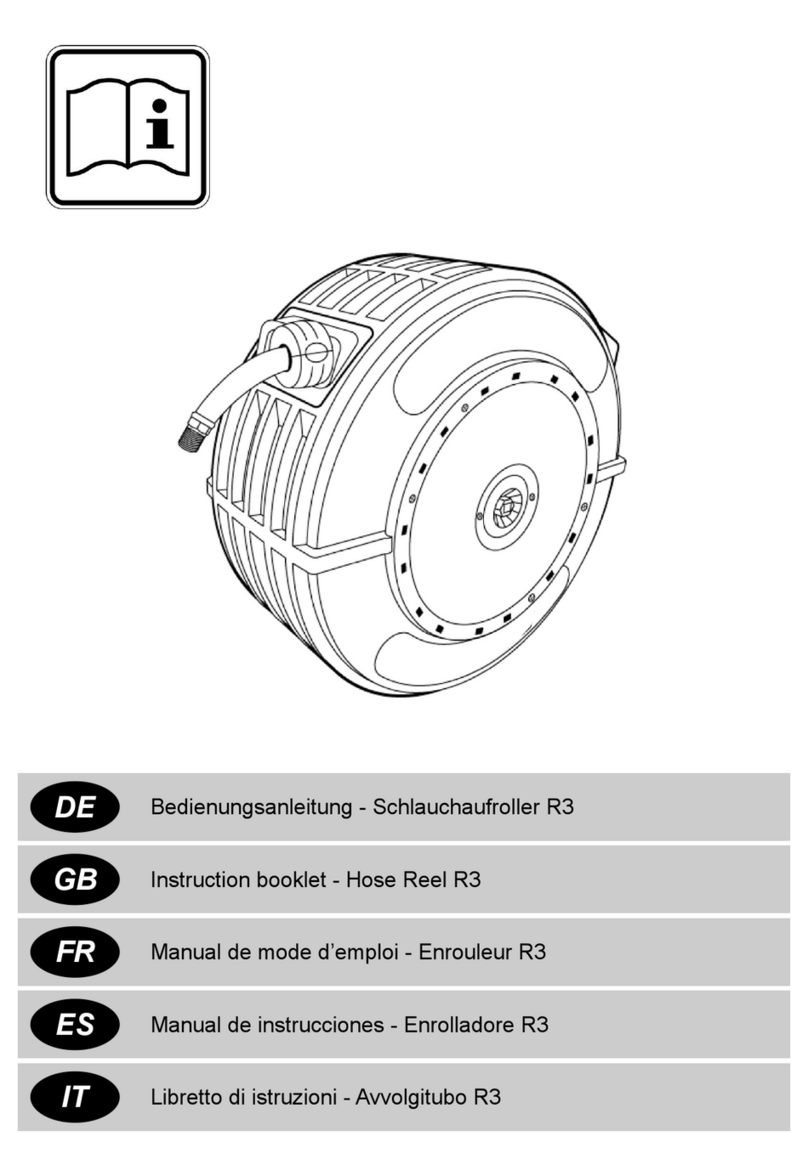GREINER PneumoLash LCV Guide

P
Pn
ne
eu
um
mo
oL
La
as
sh
h
pneumatic tensioner for
cord and composite strap
up to 50 mm
LCV Stock no. 089192
Operating Instructions
and Spare Parts List
FIRST
read these
instructions
Do not destroy these operating instruct-
ions! The customer is obliged to make
these operating instructions available to
all operators and service personnel and to
ascertain that these persons understand
the contents.
Adhere to safety instructions and warn-
ings! Erroneous operation may cause seri-
ous injuries!

4
Use safety glasses with lateral guards and protective gloves
during cutting operations while working with strapping
tools for cord and composite strap.
Do not put your hand or any other parts of your body
between the strap and the piece to be packaged while
operating the strapping tool.
The strap may tear while tensioning! Do not stand with-
in the flight of the strap.
Hold the upper part in your hand while you cut the
strap, and place yourself outside this range.
Caution:
The lower strap end will spring up; Use safety
strap shears!
Use only original central spare parts.
Original
Field of Application for the PneumoLash
The PneumoLash central strapping tool is suitable exclusively for strapping all kinds
of goods to be packaged, for securing cargo load units respectively using conven-
tional cord and composite strap.
Warning and Safety Recommendations

5
Suitable Cord and Composite Strap and Buckles
Use commercial size
textile and composite strap
0.5 to 2.4
mm thick and 50 mm (2") max. wide exclusively.
Use commercial type
locking buckles
of suitable size only.
The buckles must be used together with the proper textile or com-
posite strap as released by the strap producer.
Compressed Air Supply Requirements
However, the maximum air pressure of 700 kPa / 7.0 bar (100 psi) must not be
exceeded in any case. For trouble-free operation the compressed air supply should
deliver 700 l/min minimum.
Safe and reliable operation is ensured by installing an air filter and oiler into the feed
air line within a distance of 10 m ahead of the motor. We also recommend to
integrate a pressure regulator into the compressed air conditioning unit. It keeps
the desired operating pressure constant and simultaneously serves for the perform-
ance regulation so that the motor performance is exactly adjusted to the strapping
requirements.
The maximum possible tension for the respective strapping operation should be
preset via the pressure control valve. The below table quotes reference values as to
the strap tension plus required compressed air feed with regard to the respective
operating pressure.
Operating pressure of applied
compressed air feed
SI ANSI
Maximum obtain-
able strap tension
Compressed air
consumption (appr.)
200 kPa
/
2.0 bar
29 psi
2.5 kN
230 l/min
300 kPa
/
3.0 bar
43 psi
3.5 kN
280 l/min
400 kPa
/
4.0 bar
58 psi
5.0 kN
330 l/min
500 kPa
/
5.0 bar
72 psi
6.0 kN
380 l/min
600 kPa
/
6.0 bar
87 psi
6.4 kN
470 l/min
700 kPa
/
7.0 bar
100 psi
7.5 kN
610 l/min
Table 1: Strap tension in dependence of pressure, compressed air consumption
The conditioning unit and compressed air feed line should be selected so as to
ensure sufficient flow cross-sections for a minimum pressure drop to ensure that
the motor will put out its full capacity.We recommend the use of the FESTO® Type

6
FRC-3/8-D-5M-MINI conditioning unit. For connecting the compressed air supply a
hose with 9 mm clear width should be used and connected to the unit using the
coupling 005-720, which comes with the set. For minimum pressure drop the air
feed hose must not be longer than 10 m.
Motor Lubrication
In order to guarantee optimal life and performance the air motor requires appr.
21 mm
3
/min oil. Insufficient lubrication leads to faster vane wear and reduced per-
formance. For the required quantity of oil the mist oiler in the conditioning unit
must be set to deliver one drop of oil appr. every 45 seconds with continuous motor
operation (one drop of oil corresponds to appr. 15 mm
3
/min).
For long life and optimal performance with the corresponding operating tempera-
tures the oils used should fulfil the below listed requirements:
Ambient Temperature
Oil Type
Example
less than 5°C
ISO VG 46 / DIN 51502 DL 46
EA 60 S
5°C –35°C
ISO VG 150 / DIN 51502 DL 150
Almo
®
525
25°C –60°C
ISO VG 32 / DIN 51502 PGL 32
Almo
®
529
Table 2: Released oil types
Accessories for PneumoLash
Your central dealer and service partner holds the below listed accessories in store
for you to usefully complete your PneumoCord strapping tool:
•
Suspender (Stock no. 040-900)
The suspender (040-900) permits to hang up your PneumoLash
strapping tool on a balancer, giving the tool a stable bal-
ance in various orthogonal positions: PneumoLash in
horizontal position (refer to illustration) turned 90°
about the fixing point of the suspender; in vertical
position with motor pointing downward permitting
free turning of the unit within a range between 0
and 90° relative to the suspender.

7
•
Hose unit (Stock no. 089901)
consisting of: 10 m RectuSoft
-
PVC 9.0 x 14.5 mm
hose, 25KA TF09 MPN clutch, GT17/09N screw sock-
et mounted via KB1417 two-ear hose clips. Connection
of the PneumoCord to the service unit.
•
Service unit (Stock no. 089900)
FRC-3/8-D-5M-MINI
Filter-pressure-control valve-oiler combination, 5µm filter
with metal protective basket and manual condensate drain.

8
Mounting the Locking Buckle
Depending on the type of buckle, different methods can be used to thread the cord
and composite strap into the locking buckle.
Option I
can be used for buckles with open ends.
Option II
can be used for closed
buckles.
Decisive for the method applied for strap mounting are the details furnished by the
producer of the locking buckle used in combination with the cord or composite
strap applied.
Option I
1.
Placing strap end into
buckle
Thelockingbuckleendsmust
pointupwardandawayfrom
the operator. Run the strap end
from the bottom through the
buckle opening.
2.
Inserting the strap end
into the buckle
Run the strap end around the
buckle end located left from the
operator and lead it through
the distance between the buckle
end and lower located buckle
winding.
3.
Termination of strap end
mounting
Lead strap end through the
buckle until it protrudes over
the buckle 50 mm minimum.
Now run the strap around the
package or around the cargo
unit to be secured.
1.
4.
Inserting strap loop into
buckle
Bendoverstrapandplacebent
portion from lower end through
buckle opening.
5.
Mounting strap loop in
buckle
First bend folded portion
approx.180°aroundtheright-
hand
buckle end and then
slide
it over buckle end.
6.
Tightening the strap
Manually tighten the upper
strap portion retaining the
lower portion of the strap ensur-
ing that the buckle is not dis-
placed.
2.

9
Option II
1.
Placing the first strap end
into the buckle
Run the first strap end from
below through the middle buck-
le opening.
2.
Inserting the strap end
–
first step
Run the strap end from below
around the buckle opening
located left of the operator.
3.
Inserting the strap end
–
second step
Now push the strap end from
above through the middle open-
ing.
4.
Tightening the strap
Pull the strap leaving the lock-
ing buckle so that strap loop
closes around the buckle.
5.
Placing the second strap
end into thebuckle
Runthestraparoundthepack-
age or item to be secured and
place the second strap end from
below into the middle buckle
opening.
6.
Inserting the strap end
–
first step
Run the strap end from below
around the buckle opening
located right of the operator.
7.
Inserting the strap end
–
second step
Now push the strap end from
above through the middle open-
ing.
8.
Tightening the strap
Pull the strap leaving the lock-
ing buckle so that strap loop
closes around the buckle.

10
Operation
of the central strapping tool PneumoLash
LCV
1. Mounting strap in locking
buckle
First the strap is cut to the required
length. The length of strap should
be long enough to reach around the
item at the position to be strapped
and there should be an overhang of
at least 50 cm.
Now the end of the cord or compos-
ite strap is fixed to the buckle end
located left of the operator accord-
ing to the buckle manufacturer’s
instructions.
Then run the strap around the pack-
age or cargo unit to be secured.
2. Sealing locking loop
No insert the strap into the locking
buckle on the right end of the buckle
according to the locking buckle
manufacturer’s instructions.
Tighten strap by pulling at the
upper strap end and simultaneously
manually arresting the lower strap
end.

12
1.
2.
1.
2.
3. Placing the strapping tool
unto the strap.
Hold the free strap end with your
left hand and press down the lever
with your right hand toward the
tool motor.
Now slide the strapping tool from
right to left onto the piece of strap
up to the stopper which is lying on
the item to be strapped.
4. Inserting the strap
Slowly release the tool lever in
upward direction.
Next place the piece of strap lying
on top in the slot of the winding
shaft up to the stopper.
5. Strap tensioning
Now, the left hand guides the strap.
The right hand holds the tool motor
and depresses the lever at its rear
left end until the desired tension has
been obtained.
In order to obtain a repeatable strap
tension the operating pressure of
the unit may be so adjusted that
the desired strap tension is reached
when the motor comes to its stand-
still.
Caution: The strap may rupture
and cause injuries if the operating
pressure is excessively high for the
strap chosen or if the strap has an
insufficient tensile strength.
6. Releasing the tool
After completing the tensioning first
press the button on the right side of
the motor and then additionally the
control lever on the left side. The
winding shaft is thereby retracted,
and the strap wrapped around it is
released.
Now press down the lever down
towards the motor. Then pull the
tool to the right out of the strap that
has been made.
The strap end remaining on the
winding shaft may be removed
without any tool.
11 12
1a.
2.
1b.
3.
3.

PneumoLash Maintenance
The clamp plate 040-053 requires daily cleaning from strap residue either by com-
pressed air, wire brush or another suitable mechanical accessory. More frequent
cleaning may be indicated depending on the strap used or frequency of applica-
tion.
Otherwise the PneumoLash strapping tool requires no service. However, for repair
work the repair instructions at the end of these operating instructions should be
adhered to.
During the warranty period repairs performed by unauthorised persons will cease
the guaranty of the manufacturer.
Hints for Repair
With repair work, the sliding and bearing points as well as the components within
the drive housing and worm gear unit plus ball bearing must be regreased with suf-
ficient liquid grease.Authorised is UNIGEAR® LA02.
Components secured with LOCTITE® 270 according to the spare parts list require
replacement of the LOCTITE® 270 seal if this material has been removed during
repair.
Repair of compressed air vane motor 038-190
Repairs of compressed air vane motors must be done by central authorised shops
exclusively. The operator or other unauthorised persons must not open the motor
nor disassemble it.
During the warranty period repairs performed by unauthorised persons will cease
the guaranty of the manufacturer.
Specifications
•
Length/width/height:
305 x 135 x 225 mm
•
Weight:
4.35 kg
•
Seal:
Friction lock with buckle
•
Compressed air:
maximum 700 kPa / 7.0 bar (100 psi), maximum 610 l/min
•
For cord and composite strap,buckle:
10 –50 mm (3/8" –2"), thickness 0.5 up to 2.4 mm max.;
Locking buckle as per recommendation of the strap manufacturer

Table of contents

